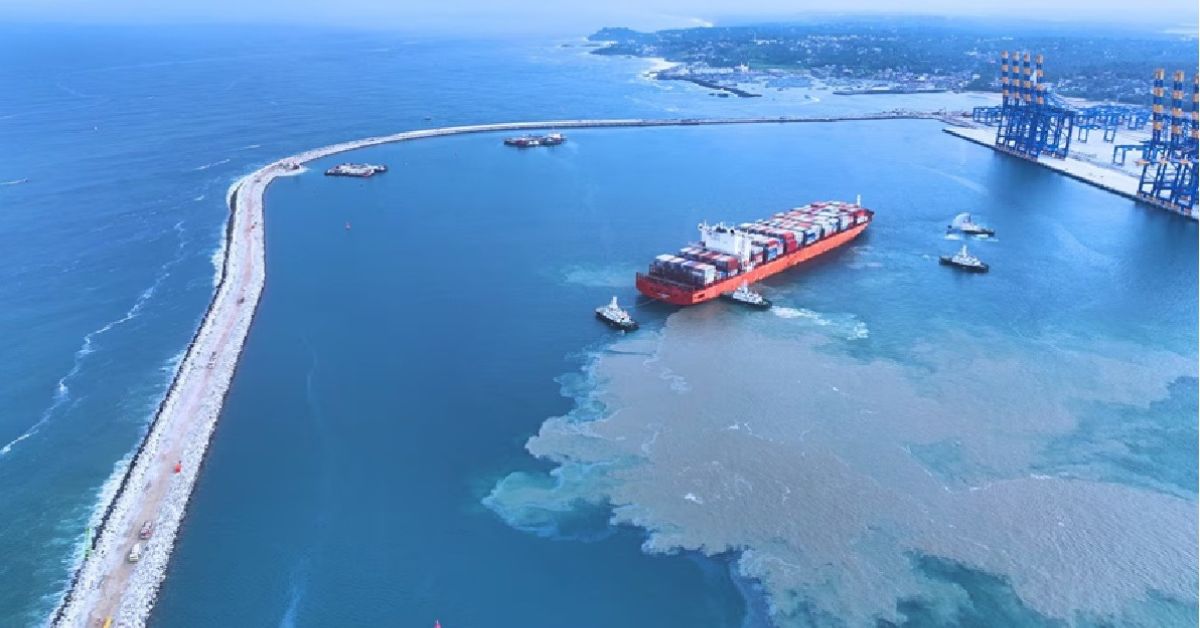The Vizhinjam International Seaport has handled a record amount of over 8 lakh twenty-foot equivalent units (TEUs) of containers by enabling the berthing of about 385 ships, nearly a year after it started commercial operations. After Jawaharlal Nehru Port Authority (JNPA) in Mumbai and Mundra Port, the flagship port of Adani Ports & SEZ Ltd., the port is rated third nationally. In terms of handling cargo volume, the port is ranked first this fiscal year when compared to private ports in the east and south zones.
Shortly after its commissioning, the port has been redefining maritime business from the south. It started limited-scale commercial operations during the five-month trial phase that started on July 12, 2024, and then full-fledged commercial operations on December 3. Vizhinjam Port is far ahead of other ports, but Chennai International Port (82,829 TEU) and Cochin Port (81,070 TEU) are not far behind, according to the June closing volume of Indian private ports in the south and east zones.
Port insiders claim that the Cochin port profited from the spillover impact of the Vizhinjam port’s full-fledged commercial functioning. As part of the second and third stages of development, the port, which recently obtained environmental clearance from the Ministry of Environment and Forests, will expand its capacity by establishing more infrastructure facilities. Adani Vizhinjam Ports Private Ltd. (AVPPL), the port concessionaire, plans to invest around ₹10,000 crore in the transshipment port’s expansion.
Upon completion of the second and third phases, the port will see the container handling capacity increased to 30 lakh TEUs (twenty-foot equivalent units) from the 10 lakh TEUs in Phase I. Through the use of automated systems, the capacity of the port can also be increased to 45 lakhs TEUs containers per year.









